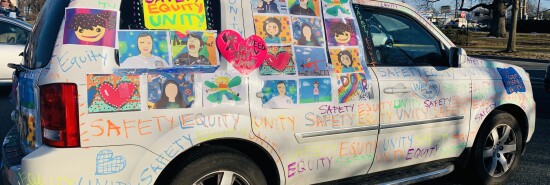
Break up the big school districts
Timothy P. Carney
Video Embed
The public schools in Montgomery County, Maryland, on Monday opened on a two-hour delay. This was a borderline call, considering there was no snow or ice on the streets at 6 a.m., and so it’s no surprise that the largest neighboring school systems — Washington, D.C., and Fairfax County, Virginia — opened on time.
In my 12 years as a school parent in MoCo, we would have two-hour delays or total closures on days when there was no snow or ice anywhere in our ZIP code. It’s a famous fact about MoCo Public Schools: the snow days with snow. It’s not just about overly cautious school officials; it’s also about the massive size of a school district.
HOME ECONOMICS: THE HUMAN COST OF THE AFFORDABILITY CRISIS
You might have no snow or totally plowed sidewalks and roads in Burtonsville or Potomac and then 3 inches of unplowed, icy snow covering the roads in Damascus.
MoCo is 500 square miles and includes urban areas, small towns, and rural parts. Also, there are 160,000 students in the MCPS system. (It was 180,000 just a few years ago, but their yearlong COVID closures, followed by a yearlong mask mandate and two-year youth crime spree, have taken a toll, along with the baby bust now being high school age.)
Because snow days are a centralized decision in this massive school district, hundreds of thousands of students’ school days are determined by weather that only affects a small slice of students many miles away.
And before you say, “Oh, come on, more snow days are good,” keep two things in mind: MCPS has “remote learning days” on snow days, meaning children are stuck on Zoom; again, it’s often not snowing, which means sledding, snowball fights, and snow football aren’t even an option.
But this isn’t really a post about snow days. The big problem is that in this massive school district, nearly every decision is centralized.
For one thing, this means there’s not really democratic accountable. Public schools in a school district of 160,000, in a population of 1 million, are not really local schools. Communities don’t have control over schools in such a setting. Often, the school district boundaries have no regard for community boundaries, which means the high schools fail to serve as community hubs the way they do in small-town schools.
When the school board kept schools closed for an entire year during COVID, the pro-closure teachers always focused their arguments on the lowest common denominator, pointing to the school in the county with the worst ventilation, the most overenrollment, and the biggest language barriers.
No, teachers told me. “There’s no equity there.”
So when you centralize decision-making in a massive bureaucracy and hold a rigid concept of “equity” as a highest principal, you get a very kludgy, unresponsive system.
Montgomery County should probably break up its school system into eight different systems of about 20,000 students each. (This would mean about three or four high schools per school district.) Give each school district autonomy, but provide centralized funding from the county taxpayers, with the money portioned out proportional to the student population with some adjustments for districts with poorer families.
Fairfax and Loudoun counties in Virginia, both schools whose boards have been taken over by ideologues, should probably do the same.
Locally controlled schools are a key institution of civil society in a world where alienation is tearing us apart.
Oh, and each of those smaller school districts should start by considering a radical proposal: When it actually is too snowy to get to school, let the children have a snow day.
